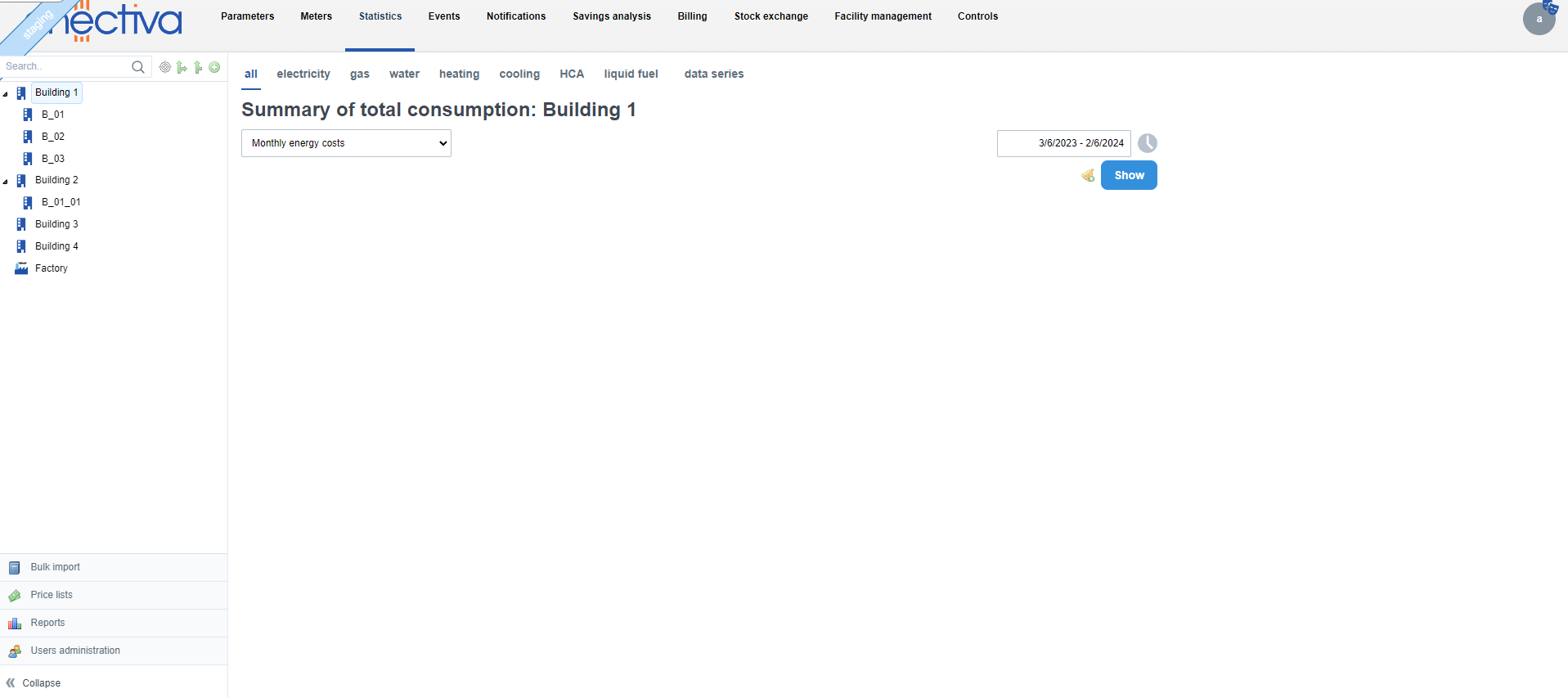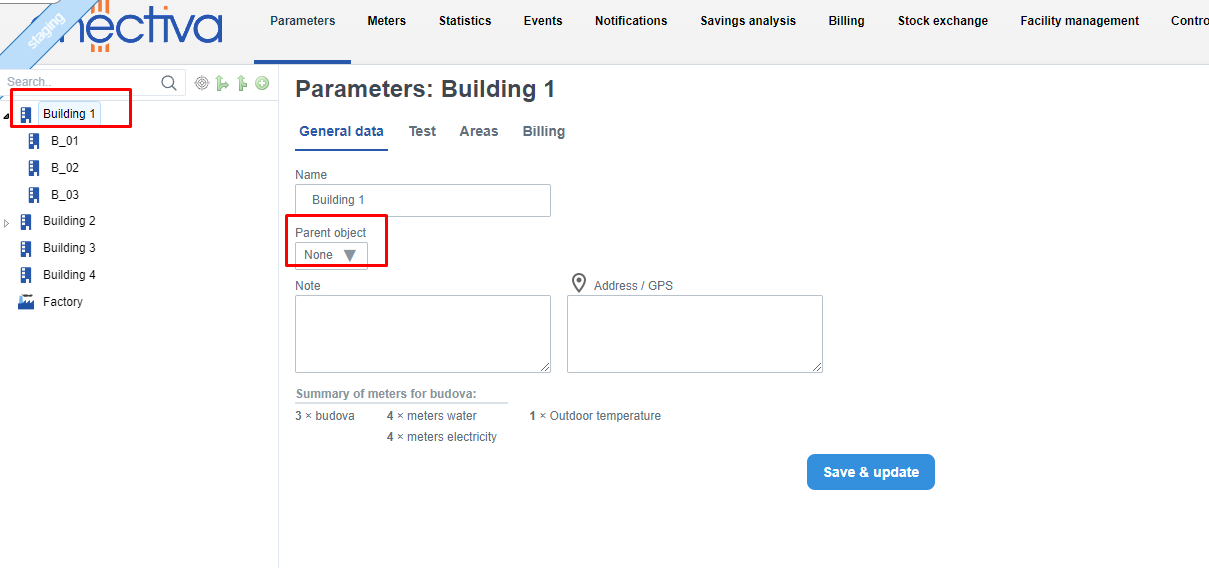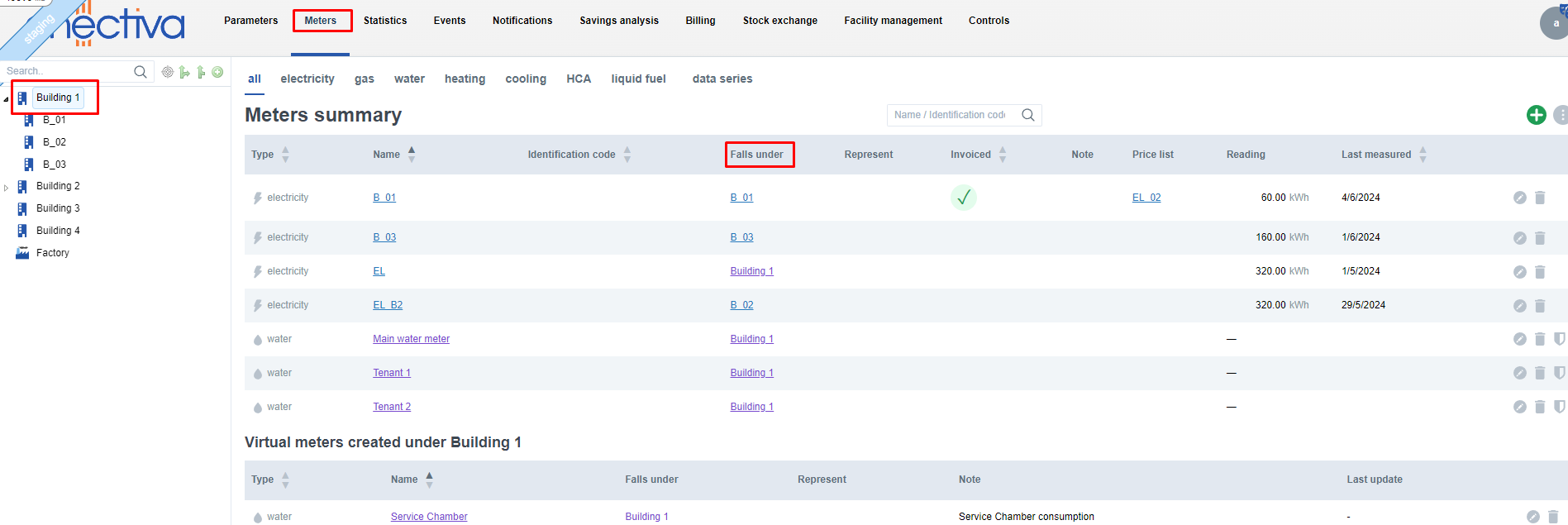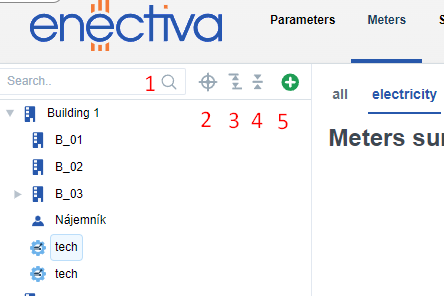What is Enectiva?
Enectiva is a web-based information and administration system operated in the form of SaaS (Software as a Service, which serves several purposes:
- Monitor and process energy meter data or any other data series
- Calculate and analyse energy consumption costs and provide detailed statistics
- Facilitate building management using control units
- Monitor consumption or cost overruns with automatic notifications
- Create and automate consumption invoices, generate reports and graphs
Fundamental orientation
When you log in to enectiva, you'll see a screen similar to this one:

The tabs at the top of the screen are used to navigate the enectiva program and each has its own purpose, which we will describe in turn.
The panel on the left side of the application contains the structure of your objects, which you can organize according to the real situation, following a tree hierarchy. Objects are also assigned the concept of entity within the applicat ion. Objects in the tree can be easily moved around as needed to make their hierarchy best represent reality. Click on the object in the parameters tab by setting Parent object.

Click on individual objects in the left panel (buildings, complexes, factories, technologies, etc.) to move to the given object. Being on a certain object means that you can see all the meters that fall under that object and the objects that fall under it when you click on Meters.

The buttons located in the upper left part are used to manipulate the entity tree:
- If you want to search for an entity (e.g. a building, etc.), use the magnifying glass buttons.
- Find selected entity
- The secondary button is used to unfold the entire entity tree
- On the other hand, the button closes the whole entity tree, so we can see only the top level entities.
- To add a new entity, press the button plus.

Entity types
Entities can represent both real objects and can serve only as a representation, there are also a few entities that serve only as a representation such as Portfolio (buildings). Most frequently, we will use these abstract representations to clearly categorize buildings by purpose or location. Of course, it's up to you how you sort your entity tree. There are 9 entity types in total:
- Investor - represents the owner or manager of a large part of the building, usually located at the top of the tree.
- Portfolio - usually used to divide groups of buildings according to their location or function (for example, Block A and Block B of a factory complex)
- Complex - typically a group of buildings in one location
- Building - a single building, most often an apartment unit, shopping
center, etc..
- Tenant - one unit in the building
- Assembly hall - typically a building used for production, etc..
- Economic centre - individual sectors of production unit, assembly hall, service room, etc.
- Technology - such as public lighting, ventilation, air conditioning
units
- Switchboard - can be used for more detailed classification of measurements
You now understand the fundamental operations and orientation on the screen in enectiva application. Next, we'll look at the application options.